Tag archives: renewable energy
The science and policy of green energy
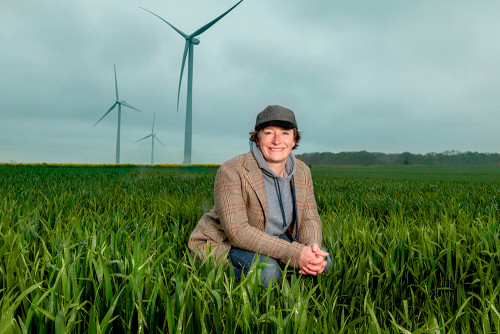
Juliet Davenport at Hampole wind farm near Doncaster. (Courtesy: kalory.co.uk)
By Margaret Harris
In the days following the Great Storm of October 1987, as people across southern England and northern France picked roof tiles and downed tree limbs out of their gardens, Juliet Davenport began thinking seriously about weather.
At the time of the storm, Davenport – now the chief executive of Good Energy, a UK-based supplier and generator of renewable energy – was a third-year physics student at the University of Oxford. She was fascinated to learn that meteorologists (including the BBC’s Michael Fish, who famously told viewers “not to worry” about an approaching hurricane) got their predictions wrong due, in part, to a simple error in the location of ship-based weather observations in the Bay of Biscay, which led them to predict that the storm would follow a more southerly track. “I realized then just how fundamentally sensitive our systems are to data fluctuations,” she told an audience at the University of the West of England (UWE) last night.
Thirty years later, Davenport is still fascinated by the science of weather and climate, but she has also become passionate about the economics of how business becomes an “engine for change” in the world. The role of business in decarbonizing the UK economy was a major theme of her talk. Often, she explained, people regard sustainability and climate change as “someone else’s problem”. That isn’t useful, she said, because “if you expect one part of a society to do all the work, it’s really hard”.
View all posts by this author | View this author's profile
Juan Morante: an energetic man
By Matin Durrani
Juan Morante, who’s boss of the Catalonian Institute for Energy Research (IREC), visited the headquarters of IOP Publishing, which publishes Physics World, late last year. Morante has also just taken up the reins as the new editor-in-chief of the Journal of Physics D and was here to discuss everything about the journal, from commissioning and peer review to design and marketing.
View all posts by this author | View this author's profile
Carlo Rubbia backs a Higgs factory and methane cracking
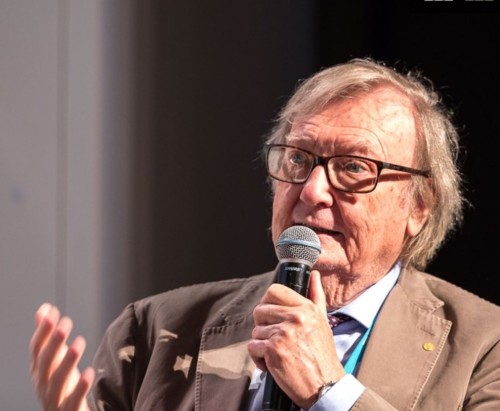
Good craic: Carlo Rubbia wants to have a crack at methane. (Courtesy: Lindau Meeting)
By Hamish Johnston at the Lindau Nobel Laureate Meeting in Germany
It’s my second day here at the 66th Lindau Nobel Laureate Meeting, and it has been a busy one so far.
I have just been chatting with Carlo Rubbia, who shared the 1984 Nobel Prize for Physics for the discovery of the W and Z particles.
Rubbia gave a fantastic talk yesterday about future sources of energy and he was eager to expand on this topic. In particular, he told me about a new technology he has been working on to produce energy from natural gas without releasing any carbon dioxide – a technique called “methane cracking“. While this sounds like a fantastic solution to climate change, at least in the short term, he admits there are lots of technical challenges to overcome.
Physics saves humanity, the large rainfall collider and other environmental highlights on Earth Day
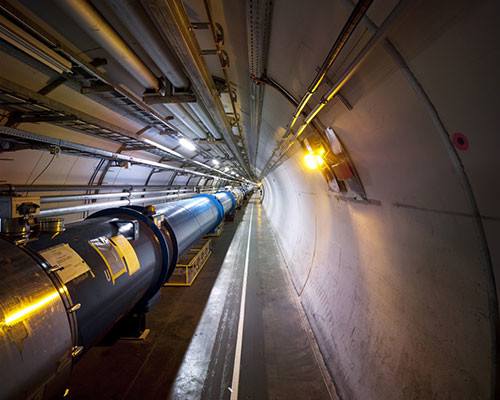
Gravity’s pull: could the LHC be used as a giant rain gauge? (Courtesy: CERN)
By James Dacey and Hamish Johnston
Today is Earth Day, so let’s temporarily rename this regular Red Folder column as the Green Folder. Either way, today we’re going to focus on the Earth and environmental issues. The official website of Earth Day – an initiative now in its 46th year – has details about the various initiatives and events taking place around the world today.
First, let’s pay tribute to a physicist whose work had a profound influence on the climate and energy debate in the UK and beyond. Sir David Mackay died on 14 April aged 48 following a battle with cancer. Mackay is remembered among other things for his pragmatic approach to energy and his 2008 book Sustainable Energy: Without the Hot Air (free access) was hailed for its rigour and refreshing absence of rhetoric. Mackay’s writings attracted the interest of the British government who appointed him as chief scientific adviser to the Department of Energy and Climate Change in 2009, a post he held for five years. Ever prolific, Mackay was blogging about his experiences right up until two days before his death.
Cracking the earthquake lights mystery and out-of-this-world technology
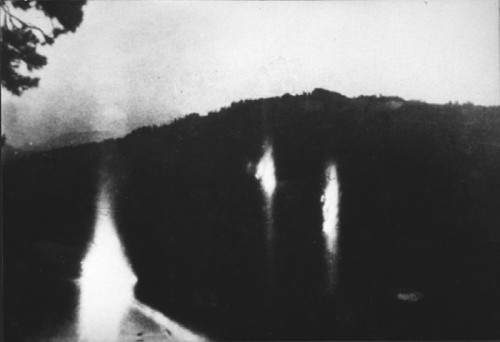
A photograph of streams of lights taken in 1977 near Brasov, Romania, about 100 km from the epicentre of a M 7.2 earthquake. (Courtesy: Seismological Society of America)
By Tushna Commissariat
In case you missed it, I was at the APS March meeting in Denver, Colorado last week and I was blogging about a whole host of interesting talks and sessions that I attended. Although I am back in Bristol now, there were one or two other talks that I thought covered some very interesting physics, so here’s a catch-up.
Slip slidin’ away
Seasoned physicsworld.com readers will remember that earlier this year, we featured a rather intriguing story on the phenomenon of earthquake lights – the mysterious and unpredictable glowing lights that seem to appear before some earthquakes. First documented in the 1600s and seen as recently as the Fukushima earthquake of 2011, the “unidentified glowing objects” add to the long list of possible earthquake precursors, and so are of interest. The study that we wrote about in January looked at 65 well-documented events of such lights and concluded that they may occur thanks to a particular type of geological fault – a subvertical fault – causing the earthquake.
The future of energy in Gothenburg
By Michael Banks
Yesterday I joined more than 1000 people attending the day-long Nobel Week Dialogue event in Gothenburg, Sweden. The delegates battled the cold winter weather to make it to the Swedish Exhibition and Congress Centre, just south-east of the city centre (and next to a theme park, of all things).
This is the second such Nobel Week Dialogue and the first time it has been held in Gothenburg. Last year the theme for the event in Stockholm was the “genetic revolution” and this year it was on “exploring the future of energy”.
View all posts by this author | View this author's profile
What can superconductivity do for the environment?
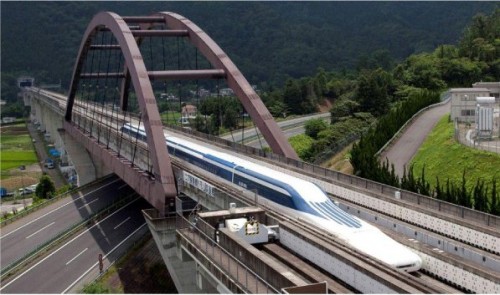
Trains levitated by superconducting magnets could be in commercial service in less than 15 years (Courtesy: Shigehiro Nishijima et al.)
By Hamish Johnston
When I think of superconductivity, applications that could improve the environment don’t usually come to mind. Perhaps that’s because superconductors only work at very low temperatures and lots of energy is needed to cool them. However, a review article just published in the IOP Publishing journal Superconductor Science and Technology points out some interesting environmental applications.
Fuel cell powers rock guitarist
By Matin Durrani
Running on hydrogen and oxygen and producing just electricity without any nasty emissions, fuel cells have over the years been used to power everything from bikes and buses to cars and even planes.
But last week saw the debut of a fuel cell at Imperial College London that was used to power a rock band. The fuel cell was unveiled at a summer barbeque organized by the Hydrogen and Fuel Cells (H2FC) Supergen Hub – a scheme funded by the UK’s research councils to boost interest in fuel cells among UK universities and businesses.
View all posts by this author | View this author's profile
Five of the best
By Margaret Harris at the APS March Meeting in Baltimore
With so many sessions taking place at the APS March Meeting, finding time to write about them is almost impossible. However, now that I’m waiting for my flight from Baltimore back to the UK, I’ve got all the time in the world – so here’s my list of five conference highlights.
Wind turbines’ effect on the wind underestimated
By Hamish Johnston
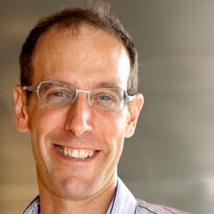
David Keith.
(Courtesy: Eliza Grinnell, Harvard SEAS Communications)
How much energy could be generated worldwide using wind turbines? That’s the sort of back-of-the-envelope calculation that physicists love.
Estimates by scientists had put the generation rate at somewhere between 56 and 400 TW. To put that into perspective, a typical nuclear or fossil-fuel power plant churns out about 1 GW.
However, these calculations don’t tend to consider the impact of huge wind farms on the wind itself. Now, David Keith of Harvard University and Amanda Adams of the University of North Carolina have used a “mesoscale” weather model to do just that.
Their conclusion is that previous estimates of global wind capacity could be as much as 10 times too high.
